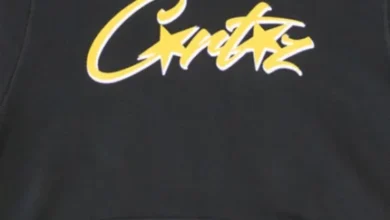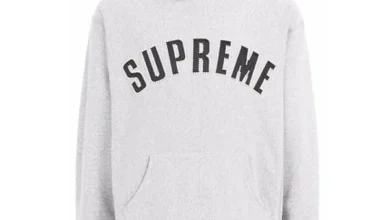DIY Guide: How to Create Your Own Graphic Hoodie or Shirt


Creating your own graphic hoodie or shirt is a fun and rewarding project that allows you to express your creativity and personal style. Whether you want to design something unique for yourself or create personalized gifts for friends and family, this DIY guide will take you through all the steps necessary to produce a professional-looking garment. From choosing the right materials to mastering various printing techniques, let’s dive into the exciting world of custom apparel design.
Gathering Your Materials and Tools
Before you begin your DIY project, it’s essential to gather all the necessary materials and tools. This includes the hoodie or shirt you want to customize, fabric paint or markers, a stencil or transfer paper, a computer with design software, and a printer. Other useful items include an iron, a heat press, a cutting mat, and a cutting tool like a craft knife or scissors. By having everything ready from the start, you can ensure a smooth and efficient workflow. Embrace the outdoors with our line of hoodies at officialvloneclothing.com available in various sizes and colors.
Choosing the Right Garment
Selecting the perfect hoodie or shirt is crucial for the success of your project. Consider the fabric type, color, and fit. Cotton and cotton-blend fabrics work best for most printing techniques because they absorb ink well and provide a smooth surface for your designs. Choose a color that complements your design, keeping in mind that darker colors might require additional steps or materials, such as white ink or a base layer.
Designing Your Graphic
Creating a compelling graphic is the heart of your custom apparel project. Use graphic design software like Adobe Illustrator, Photoshop, or free alternatives like GIMP and Canva to bring your vision to life. Start with a clear concept, and experiment with different fonts, images, and layouts. Keep in mind the size and placement of your design on the garment. Once you’re satisfied with your design, save it in a high-resolution format suitable for printing.
Preparing Your Design for Printing
Once your design is complete, it’s time to prepare it for printing. Depending on the printing method you choose, this step can vary. For stencils, you’ll need to print your design on paper and cut out the areas where you want the paint to go. For heat transfer paper, print your design in reverse (mirror image) so that it transfers correctly onto the fabric. Ensure that your design is the correct size and resolution to avoid any pixelation or distortion.
Printing Methods: Screen Printing
Screen printing is a popular and versatile method for creating custom apparel. It involves creating a stencil (or screen) and using it to apply layers of ink on the garment. This method is ideal for designs with few colors and requires some specialized equipment. To screen print at home, you’ll need a screen printing kit, which includes a screen, squeegee, ink, and a frame. Follow the instructions to transfer your design onto the screen, and then apply the ink to the garment.
Printing Methods: Heat Transfer
Heat transfer is a straightforward and accessible method for ee shorts transferring your design onto fabric. It involves printing your design onto special transfer paper and then using heat to transfer the ink onto the garment. This method is great for full-color designs and can be done with a regular home printer and an iron or heat press. Follow the instructions on the transfer paper packaging to ensure a successful transfer, including preheating the garment and applying the correct amount of pressure and heat.
Printing Methods: Direct-to-Garment (DTG)
Direct-to-garment printing is a newer technology that prints the ink directly onto the fabric, much like a regular inkjet printer. This method is excellent for detailed, full-color designs and requires a DTG printer. While this equipment can be expensive, many print shops offer DTG printing services if you want a professional finish. To use a DTG printer, prepare your design as you would for any print job, load the garment into the printer, and follow the machine’s instructions.
Adding Finishing Touches
After printing your design, it’s essential to add finishing touches to ensure your garment looks professional and lasts a long time. If you used fabric paint or markers, heat-set the design with an iron to make it permanent. For screen-printed or heat-transferred designs, follow the manufacturer’s instructions for washing and curing. You can also add embellishments like embroidery, patches, or rhinestones to enhance your design further.
Caring for Your Custom Garment
Proper care will keep your custom hoodie or shirt looking great for years to come. Always follow the care instructions for the specific materials and printing methods used. Generally, it’s best to wash custom garments inside out in cold water and hang them to dry to prevent fading and cracking. Avoid using bleach or harsh detergents, and iron the garment inside out if necessary to protect the design.
Showcasing Your Creation
Once your custom hoodie or shirt is complete, it’s time to showcase your creation! Wear it with pride and share your work on social media to inspire others. If you’re looking to turn your DIY hobby into a business, consider setting up an online store on platforms like Etsy or Shopify. Attend local craft fairs and markets to gain exposure and connect with potential customers. With your unique designs and the skills you’ve learned, the possibilities are endless.
Conclusion
Creating your own graphic hoodie or shirt is a rewarding experience that combines creativity and craftsmanship. By following this DIY guide, you’ll be able to produce professional-looking custom apparel that reflects your personal style. Whether you’re making one-of-a-kind pieces for yourself or starting a small business, the skills and techniques you’ve learned will serve you well in your future projects. Happy crafting!




